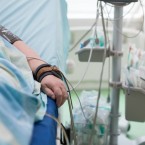In Article 36 of the Constitution, the state guarantees the right to health care, the minimum free level of state medical care. And all these benefits must be provided to the population by the structure, the healthcare system and the means that are established in the legislation.
The first budget of compulsory health insurance funds was adopted by Parliament for 2004.
In the respective budgets, the program “Sănătatea publică şi servicii medicale” (“Public health and medical services”) includes expenditures for 12 subprograms.
This:
“Management of Mandatory Medical Insurance Funds”
“Primary Care”
“Specialized Outpatient Medical Care”
“Medical community care and home care”
“Emergency Prehospital Care”
“Inpatient Medical Care”
“Highly specialized medical services”
“Palliative Care Services”
“Management of the reserve fund of compulsory medical insurance”
“National and Special Health Programs”
“Development and modernization of healthcare institutions”
“Services for reimbursement of medicines and medical devices”
For the 20th year in a row, there is a corresponding budget. But let’s open the brackets and find out some juicy details that no one wants to explain to the people, for which, obviously, there are good reasons.
We will not find out how funds are spent under individual subprogrammes, but only how they are spent under the main public health program.
Every year, 52-53 percent of the funds go to the salaries of medical and auxiliary personnel of sanitary and medical institutions and the NKMS as a governing structure.
32-33 percent of the funds are spent on household needs, maintenance and provision of services to sanitary and medical institutions.
About 14 percent is used to buy some medicines for patients in the hospital and to partially compensate for the cost of others.
Plus 2.4-2.8 percent – for food for patients in the hospital.
The total remuneration of medical and support staff, plus expenses for household needs, amounted to: 83 percent – until 2016 and 86 percent at the present time, 14 percent – directly only for some patients, and not for all.
It is clear that without medical and attendant personnel, in principle, there can be no healthcare system. But the situation in which his salary costs 52-53 percent of all expenses and another 32-33 percent goes to household needs is excessive.
Do you know why we have such an alleged healthcare system?
The answer to this question is on the surface, in Article 36 of the Basic Law. And in the structure of the health care system, which is regulated by Article 2 of Law No. 411/1995 on health protection. According to the law, our healthcare system includes medical and preventive, sanitary and preventive, sanitary and anti-epidemic, pharmaceutical and other institutions.
Please note: the Moldovan health system does not include the Ministry of Health – its head. That is, according to the law, the system is without a head, which is isolated from the body. And to this ministry, which is not part of the health system, the parliament decided to transfer district hospitals under its control.
But that is not all. According to the law no. 181/2014 on public finances, the draft budget for medical funds is developed by the Ministry of Health, approved by the government, approved by Parliament. The accumulation of income in the medical budget is the prerogative of the tax service. And expenses, distribution of financing of the medical budget are the prerogative of the NKMS.
That is, in addition to the sanitary and preventive institutions themselves, there is also a whole galaxy of structures, and all with their own separate powers, subordinate to various higher authorities.
In theory, everyone should be controlled by the government. But even it is a legally amorphous structure. The government, as a collegial body, actually exists for an hour a week, when all its members gather for gatherings. The rest of the time, everyone is on their own.
Thus, we do not have a health care system, and the current structure exists for its own sake, and not to protect the health of the nation. We got to the point that, in principle, the government is just a screen.
And here are the facts.
The number of diseases per year: 2014 – 2,745.7 thousand, 2021 – 2.931.3 thousand.
The number of hospitalized in hospitals: 2014 – 655.6 thousand, 2021 – 550.8 thousand.
Number of hospitals: 1995 – 335, 2005 (after the introduction of the system) – 114, 2021 – 86.
Number of doctors: 2014 – 12,880, 2021 – 12,214.
Number of nursing staff: 2014 – 25,938, 2021 – 17,320.
Dumitru BARBALT







